The Plain Pine Box
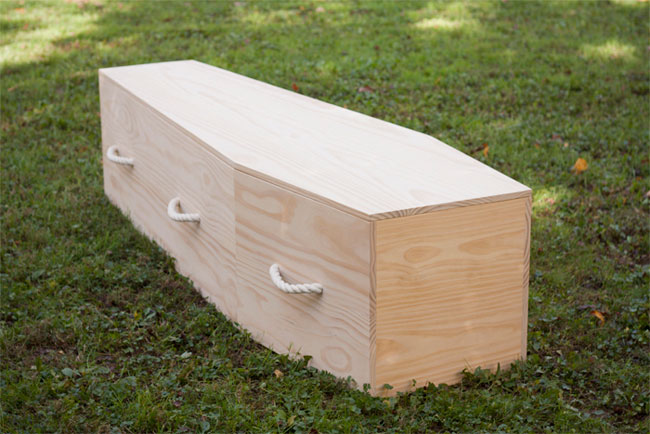
When my husband and I built this plain pine coffin, it changed the way we thought about death and memorial. The narrative below is a detailed account of the personal transformation that took place while we built this archetype.
Simplicity to the point of starkness, the plain pine box, the laying out of the dead by friends and family who also bore the coffin to the grave—these were the hallmarks of the traditional American Funeral until the end of the nineteenth century.
— Jessica Mitford, The American Way of Death Revisited
Three hours was a long time to be alone with a dead pig. That was how long my first butchery class lasted. At the time, I was working as a communications designer for an innovation consultancy. I took this butchery class as research for an assignment that I'm still not allowed to talk about. At the consultancy, we had an unconventional process, and all our projects were confidential.
I learned from a butcher in San Francisco who did all his cutting by hand. He gave me a crisp white robe to wear and various forms of heavy-duty cutlery. Then he showed me how to turn half a hog into chops, loin and butt (which, in this case, had nothing to do with the pig's rear end).
Before this class, my stomach would turn if any part of my meal revealed that it once had a face. When it came to meat, I was a (boneless, skinless) Chicken. My husband took the heads off my shrimp while I looked in the opposite direction. He carved a Thanksgiving turkey when I wasn't in the room—all so I could avoid the reality that my food was once a living thing.
A butcher's job was hard work. To do it well required strength and finesse. I possessed neither. But I was humbled by more than that.
As I separated the pig's joints, I thought about my connection to this animal. When, in the past, did I know where my food came from? This pig lived six grass-fed years on a California farm before he ended up in butchery class with me. The tidy pink cutlets I bought at the supermarket seemed devoid of any source. Provenance was a mystery.
As I sliced between ribs, I wondered how many times I wasted meat or cooked it poorly. Did I not respect this animal? Or the craft of butchery? As I pulled off layers of skin, I berated myself for choosing to be ignorant. I felt a spiritual awakening coming on. For the first time, I saw that growing and eating food were natural experiences which, because of industrialized processes, were rendered unnatural.
I was thankful to this pig. I understood the reality of our relationship. I promised the pig that I would be more conscientious. I reported to work the next morning a wiser person.
Twenty hours was plenty of time to consider my own mortality. That was how long it took my husband Jason and I to build a pine-box coffin. We designed it to fit his body because he was taller. But we agreed that it would be used by whomever kicked the bucket first.
Just like butchering the pig, building the coffin was research for an assignment. I was studying the design of American funerals and I was searching for a spiritual awakening. I collaborated with Jason because he was a skilled woodworker. And, if I was to have a revelation about death and memorial, I wanted him to be there with me.
I understood that the sight of a coffin made many people comfortable. It made me uncomfortable. I thought about the coffin as a cultural symbol loaded with stigma. People used them for Halloween props. We thought of vampires when we saw that familiar hexagonal shape. As an object, the coffin reminded us too much of death. But a casket, with its rectangular shape and plush interior, looked like a bed. The embalmed body inside it appeared to be only sleeping. These were the conventions of a typical funeral in the United States.
I thought about what bothered me about caskets. They were often made of metal and they did not biodegrade. The casket for my grandmother came with a lifetime guarantee. Whose life, I thought, was the timeline for this guarantee, since the buyer was dead? Caskets had tight seals to prevent oxygen from entering. I learned that some people believed that those seals prevented bodies from decomposing. But the casketed body did decompose and it did so in an anaerobic environment—a process far more gruesome than natural decomposition.
At the lumber yard, I held a pine board before me. I peered down its side to determine its straightness while I considered how warped our funeral practices were. Like growing and eating food, death was a natural experience, rendered unnatural through industrialized processes.
It used to be that everyone in America prepared their own dead for burial. Together with their neighbors, they washed the bodies, built the coffins, and dug the graves. About a hundred years ago, we began leaving all that to professionals. By giving up these time-honored tasks, did we deny ourselves the rituals that help us mourn?
The professionalized American way of death, rife with chemical intervention, was not unlike the food industry. But chemically augmented food was cheap while chemically augmented dead bodies were expensive. Embalmings cost an average of $750. Industrially manufactured caskets cost several thousands of dollars. The total cost of a typical American funeral ranged between $6,000 and $16,000—all for illusions. People paid for those things to avoid the reality, at least on the surface, that the person lying inside the box was no longer a living thing.
The summer before Jason and I built our coffin, we went to his great-grandmother's funeral. "Doesn't she look good?" people said as they stood over her body. "She looks at peace," others would reply as if the expression on her face were naturally occurring and not something the family paid for.
It took some craftsmanship skills to build our coffin, but it didn't cost a lot of money or take a lot of time. We drove back from the lumber yard with $240 worth of pine boards and other woodworking supplies. For the coffin handles, we ordered soft cotton rope online for $10.
We would have had a simpler and less expensive coffin had we eliminated angles and relied on metal hardware. But, Jason and I wanted to build an archetype. The form we chose—that familiar hexagonal shape—united us with centuries of people who lived, and died, before us. We also made our coffin biodegradable with no metal parts.
At Jason's studio, we grouped the boards for the coffin lid and side panels. We tested different configurations in search of the best wood-grain direction and to minimize gaps between the boards. Once we decided on the proper groupings, we marked the boards at 6" intervals. These denotations were to guide biscuit joinery, a way of linking the boards with small wooden disks.
We used the chop saw to cut each board down to panel size. Then, using the pencil markings as guides, we returned the boards to their groupings. With a biscuit jointer, we cut holes into the sides of the boards. We tested the panel alignments by placing the biscuits in the holes and shoving the boards together. Everything fit snugly, so we pulled the boards apart and prepared to glue them.
Working quickly, we applied a line of wood glue to the edges of the boards. With a brush, we spread the glue evenly. We placed the biscuits in their holes. We pressed the boards firmly together and squeezed the panel together with pipe clamps.
Jason chuckled, "Funny how people say, 'Put the nail in the coffin.' When is the last time we used a nail to build any furniture?"
A few years ago, Jason and I built our dining-room table. It helped us appreciate the fact that we must eat. We made decisions about the table's height based on how we sat. We chose its length based on how many seats we needed when family and friends came over. We based the width on how far apart we wanted to be while we took meals or played games.
Similarly, by building this coffin, we learned to recognize that we must die. It forced us to think about how we wanted our bodies to be treated. We decided we would refuse embalming. So we made the coffin deep enough to accommodate a layer of dry-ice blocks. The ice would keep his or my body cold so that we wouldn't stink up the hearse en route to the burial ground.
We imagined that our next of kin would hold a graveside memorial service. Since our coffin would be on display, we chose a handsome material for the outside—a smooth, unblemished pine. We chose a cheaper, knotty pine for the bottom of the coffin.
After the lid and panels dried, we removed the clamps. We placed the largest panel, which would become the lid, on two sawhorses. We carefully measured the angled edges and marked them with a pencil. Jason used a jigsaw to roughly cut the edges about an inch outside of the pencil lines. Then he placed a guide-rail on top of the lid and clamped it firmly in place. He ran a router down the edges to cut the lid to final size. The result was a cleanly cut hexagon.
I swept up the spray of sawdust left by the router. Then, I plugged in an orbital sander and took up my station over the coffin lid. As I moved the sander over the surface of the wood, the vibrations of that machine sent tickles through my forearm. The screeching sound of the table saw where Jason kept busy cutting mitered corners was barely audible through my earplugs. The zen of sanding soon had me lost in thought.
We were only building a box. True, it was a box to put a dead body in—one of our dead bodies. But even so, it was only a box. There was nothing intrinsically creepy about it. It wasn't a mysterious or ominous thing. What was mysterious and ominous was death itself.
I thought about how the coffin indicated death and perhaps that was what gave people the creeps. But didn't a casket do the same? Perhaps not, because caskets looked like beds or jewelry boxes. In fact, casket was a word that used to describe a small box for holding jewelry. Maybe caskets were dishonest objects. They fooled us into not thinking about death. Or maybe people were dishonest and we fooled ourselves.
After all the cutting and sanding was over, we assembled the coffin parts. We flipped the lid upside down and put plastic wrap along the edges. Then we carefully aligned the side panels to the lid so that the coffin and the lid would be flush to each other. We glued the panels together and held them in place with pipe clamps. The glue oozed out, ran down the sides, and lay in pools on the plastic wrap. We glued smaller pieces of wood into the coffin corners to reinforce the joints. We drilled 1¼" screws into the ribs to temporarily secure them. We wiped our brows and went to dinner.
On our way home that night, we thought about how eating and dying were essential functions in life. By crafting the objects that serve those functions, we became the masters of our own things. We reconnected with their origins. Provenance was demystified.
The next morning, the glue on the coffin was dry. We removed the clamps and took out the screws. At that point, we had a shell of a coffin and a lid. The next step was to fill in the coffin floor. We glued narrow wooden rails inside the coffin along the bottom edges. Piece by piece, we arranged the floor boards horizontally across the coffin on top of the rails. We changed the direction of the lumber to allow for the even distribution of body weight. This ensured that his or my body wouldn't drop out of the bottom.
The last step was to put in the handles. Jason marked six locations on the sides of the coffin. With a forstner bit attached to his drill, he put two holes at each location. Then, starting from the inside of the coffin, we pushed a piece of rope out through one hole and wove it back in through the other hole. We wrapped the ends of the rope in masking tape (to prevent fraying), tied them in knots, and cut them. After we completed our handles, the coffin was done.
I got inside. It was too hard and I was uncomfortable. "It's a good thing that whoever uses this will be dead," I said to Jason. We decided to put a bed of sheep's wool inside. The softer surface would prevent the body from getting bruises and lacerations. The wool would hide the blocks of dry ice, too.
We wrapped the coffin in moving blankets, packed it in our car, drove it across the neighborhood, and hauled it up to our fifth-floor apartment. For now, we are living with a coffin. At the time of this writing, it sits right next to our dining-room table.
We gained more than a coffin from this exercise. We cultivated in ourselves a new connectedness to the ritual of burial. We proved to ourselves that we can have some agency over our own funeral artifacts. Our coffin does not pretend to be a bed for someone only sleeping. No vampires live inside. No mysterious cloud fell over us for having made it. Our coffin is a humble vessel that we lovingly crafted to deliver one of us, someday, back to the earth. Until then, we will live as wiser people.
Paper Offerings for a Campfire Funeral
In some parts of Asia, families burn paper offerings to their ancestors. They believe that these offerings will materialize in the afterlife, where the deceased will receive and make use of them. People buy all sorts of paper items, including luxury automobiles, suits, watches, and handbags, to set aflame in the hopes that their ancestors will live on in style.
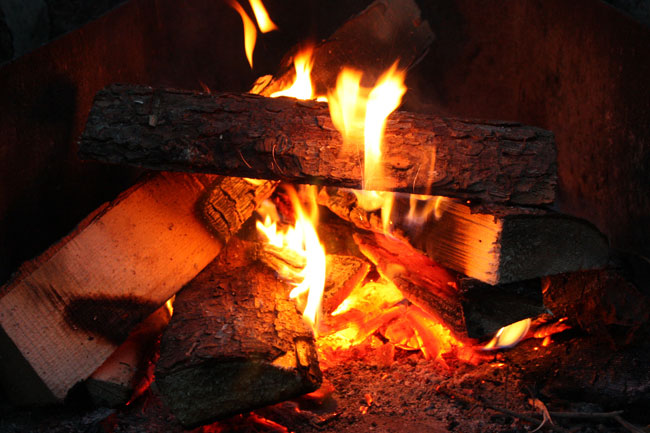
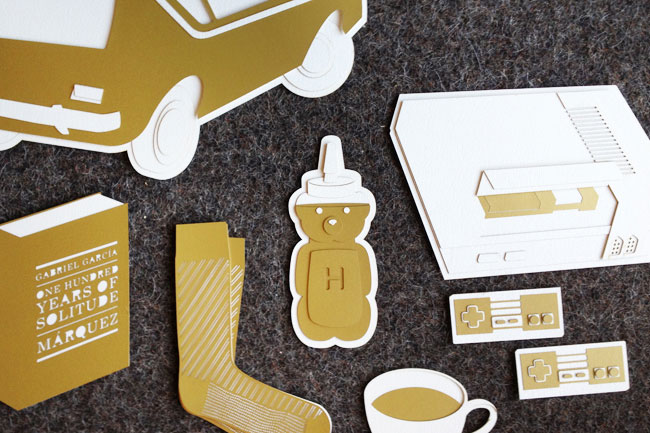
Paper offerings for my campfire funeral.
When I pass away, I would like my loved ones to burn paper offerings at a campfire for my memorial service. I wish for this, not because I believe that my favorite things will materialize in the afterlife, but because I want to leave my friends and family with a positive experience in which they will engage each other in a lighthearted activity.
I made a series of paper offerings that I will give to my friends and family when I die. I chose objects that reflect my joy. This project is a way for me to have one last laugh with my loved ones, even though I'll be gone.
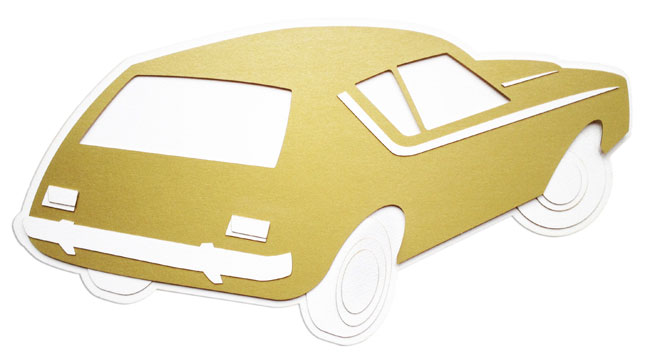
A mid-1970s Gremlin, a car I always liked but never had.
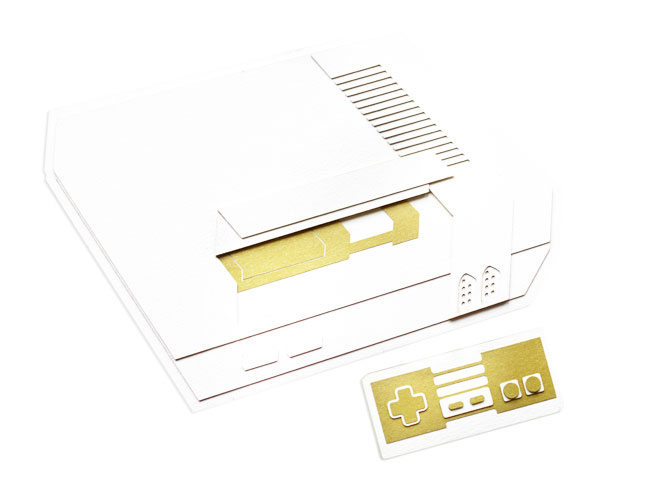
A classic Nintendo Entertainment System, on which I played my favorite childhood games.
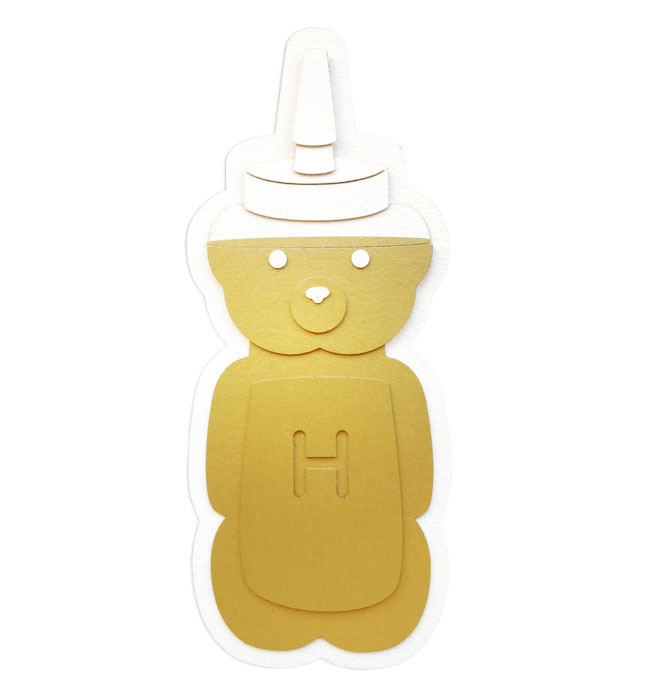
A bottle of honey, a sweet treat which my husband insists must be purchased in a bear-shaped bottle.
Living Memorials
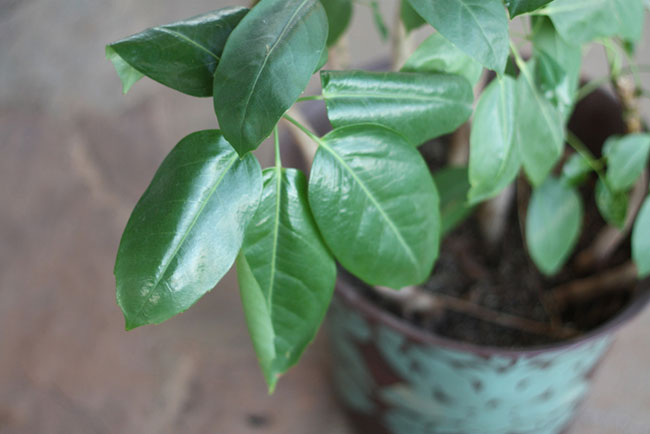
My friend Britteny's house plant.
"It just keeps growing and I almost never water it," said my friend Britteny Burlingham about one of her houseplants. Years ago, she put some of her brother's cremated remains in the soil. "I don't think I've watered it in months."
Bone ash contains fertilizing nutrients. Britteny's ficus grows larger because it feeds on the phosphorus content of her brother's cremated remains. All science aside, many people take comfort in "living memorials," the notion of perpetuating life with the remains of the dead.
Design blogs have lately featured projects that turn people into plants. One of these projects is the Bios Urn, designed by Gerard Moline. Bios is a biodegradable urn that comes with a seed packaged inside. The idea is that you fill the urn with cremated remains and plant it. The seed, assisted by cremated remains, grows to be a tree.
The Bios Urn isn't the only product of its kind. There is also the Spiritree Urn sold by The Spiritree Forest Company in Puerto Rico, and the Poetree Urn, by French designer Margaux Ruyant. Ruyant's design is notable for integrating a memorial marker into the package. With the Poetree Urn, cremated remains nourish a tree that sprouts inside a ceramic ring, engraved with the deceased person's details. The ring encircles the trunk as the tree grows larger.
Italian designers Anna Citelli and Raoul Bretzel reimagined burial of the whole body with their Capsula Mundi project. Capsula mundi are egg-shaped containers, made of bioplastic. The body is arranged in the fetal position and placed inside the container which is planted like a bulb. A tree sapling is placed into the burial mound. Over time, the decomposing body fertilizes the tree.
Artist Jae Rhim Lee began the Infiniti Burial Project to propose "an alternative to the postmortem body." She promotes what she calls "decompiculture," the cultivation of organisms that assist in decomposition. With funding from several investors, Lee is developing a unique strain of mushroom that feeds on human remains. Lee also made a burial suit which is embedded with "decomposition activators," as she calls them. The threads of the burial suit are laced with mushroom spores and a generative slurry is pumped into the suit before the wearer is buried. The spores and the slurry activate the growth of the corpse-munching mushrooms. This accelerates the process of decomposition. Lee, dressed in her burial suit, gave a Ted Talk about her project.
Most of these projects exist only as ideas, not available solutions for everyday consumers. But people like Britteny take matters into their own hands. Living memorials are simple to make. If you have a green thumb and some cremated remains to get rid of, all you really need is a plant pot, some dirt, and some seeds or a sapling.
Seeds as Tributes
Inspired by the trend toward living memorials, here is a project that gives you the tools to make seed packet tributes. You can give these to guests at a memorial service so that they can later plant flowers in honor of the departed.
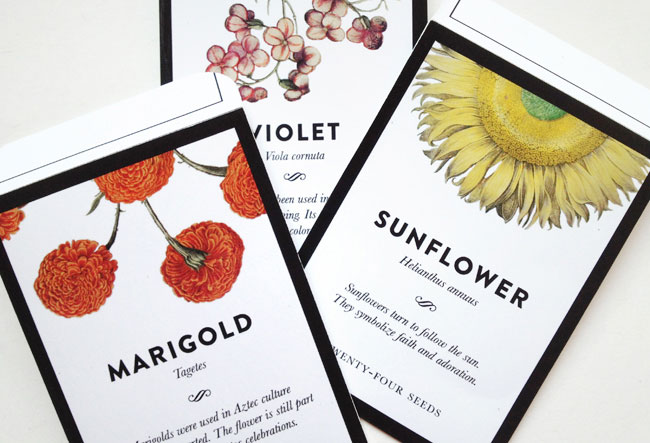
Materials list
- Bulk seeds (order violet, sunflower, or marigold)
- Downloadable pdfs (violet packet, sunflower packet, or marigold packet)
- High quality color prints
- X-acto knife with blades, a straight edge (like a metal ruler), and a cutting surface
- Glue stick or rubber cement
To make seed packet tributes:
Download the pdf documents from the materials list above. Each pdf provides two seed packets per 8.5x11 sheet of paper. You can customize the content on the back of the packets using the provided form fields. Print as many packets as you need for the service. Then, carefully cut out the packets by trimming along the thin gray outlines.
You can order bulk seeds from various web sites. I purchased bulk packs from Mountain Valley Seeds at prices that varied from two to five dollars for hundreds of seeds.